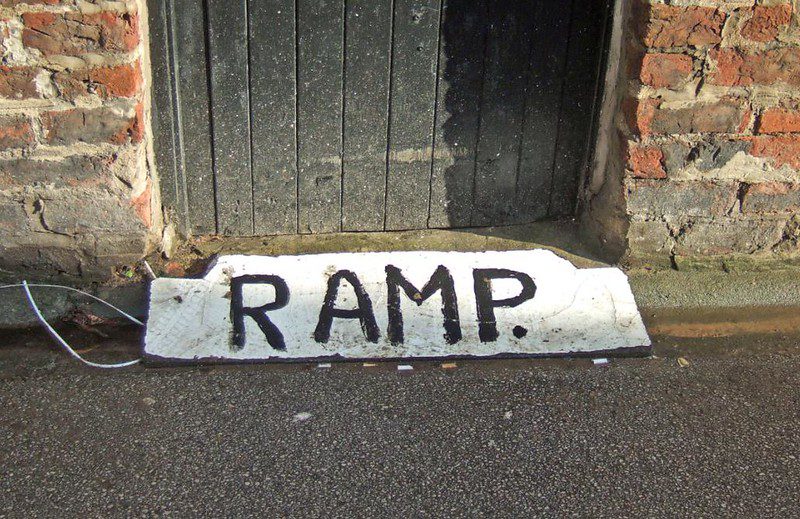
Photo by Thomas Hawk, via flickr, CC BY-NC 2.0
Overall, Houston, Texas, is one of the most statistically diverse cities in the country. But at the neighborhood level, it is severely racially segregated.
This is no accident.
Segregation in our nation’s fourth-largest city, the Southern city with the largest African-American population, is mostly due to decades of intentional government action—especially decisions to restrict government-subsidized housing exclusively to high-poverty neighborhoods of color. Last month, the federal government ruled that the practices of city-sponsored housing segregation were unlawful.
The U.S. Department of Housing and Urban Development (HUD) ruled that the City of Houston is in violation of Title VI of the Civil Rights Act of 1964, based on the results of a sweeping fair housing investigation. If Houston’s leaders do not take corrective action, the city risks law enforcement action by the Department of Justice.
Incredibly, Houston Mayor Sylvester Turner is vowing to defy the ruling. In doing so, he follows in the footsteps of many of his predecessors. For decades, Houston’s elected leaders have practiced racial segregation in the administration of federally funded subsidized housing programs without legal consequences.
Some worry that the incoming Trump administration will somehow reverse this ruling. But Civil Rights Act investigations are not political—they are thorough documentations carried out and enforced by the career federal staff tasked with upholding our nation’s most fundamental rights. John Trasviña, the former HUD assistant secretary for fair housing, told the Houston Chronicle that investigations of this kind are resolved by staff, not by political appointees.
Nevertheless, Houston leaders are vowing to use politics to continue their practices of segregation. Mayor Turner has declared that he will “utilize all possible avenues” to overturn the integration order. In doing so, he continues to misunderstand the meaning of fair housing.
Throughout the past year, the mayor and other elected officials in Houston have listened to the voices of prejudice and exclusion, blocking the construction of affordable housing in an affluent, predominantly white neighborhood while denying the predominantly African-American and Hispanic families who live in subsidized housing the option to choose where to live.
HUD’s investigation and ruling found that by preventing the construction of a subsidized development, the Fountain View Apartments, and by consistently limiting the approval of government tax credits to developments in low-income, minority neighborhoods for many years, Houston leaders are “influenced by racially motivated opposition to affordable housing and perpetuate segregation.”
Fountain View was the catalyst for the federal fair housing probe and serves as one striking example of the way Houston’s city leaders violate civil rights law. The proposed mixed-income development by the Houston Housing Authority (HHA) would represent that agency’s first-ever affirmative investment in an economically thriving, majority white neighborhood. HHA had a long and documented record of intentionally siting housing in minority neighborhoods, but is attempting to move into compliance with civil rights: The Fountain View project originated in a HUD-approved fair housing agreement to finally begin the desegregation of Houston’s public housing stock.
But as often happens when subsidized housing is proposed in mostly white communities, Fountain View received an angry backlash from some of its neighbors. “Not In My Back Yard” opposition to subsidized housing is a well-recognized dog whistle for racial exclusion. According to state statistics, the population of existing tax credit housing overall in Houston is 58.7 percent African-American and 37.2 percent Hispanic. The census tract where Fountain View would be located is 86.7 percent white.
The HUD ruling catalogues a litany of statements of residents and elected officials opposing Fountain View that HUD calls “coded language, which when considered in context, has been recognized by the courts as expressing racial animus”–everything from, “Bringing them here will bring down this area” to “people come in here and they steal the tires off our Suburbans.”
The neighborhood backlash worked: After elected officials, including Congressman John Culberson, objected to Fountain View’s construction, Mayor Turner refused to allow a vote on a resolution to use Low Income Housing Tax Credits (LIHTC) for the project, claiming that the development was too expensive. Because city approval is required for housing tax credit funding, the mayor’s action vetoed the project. As a direct result of the mayor’s decision, HUD launched its investigation less than one month later.
HUD found Mayor Turner’s cost objections to be “pretext” because no city funds would be involved in the project (as LIHTC are federal dollars) and project costs are not usually considered when the city approves other tax credit developments. Moreover, the investigation states that “facts demonstrate that the mayor’s decision was based in part on racially motivated local opposition” and that “the city has an established pattern of failing to locate or support affordable-housing projects in predominantly white neighborhoods.”
The segregation of tax-credit housing in Houston severely limits choice for low-income families, especially families of color who currently have few options but to live in concentrated poverty. Based on HUD’s review of similar data, as well as interviews with advocates and city staff, the investigation notes that between 2012 and 2016, 23 proposals for 4 percent LIHTC developments were considered for City Council resolutions. A full 21 were located in majority-minority census tracts, and the two outliers were for veteran and senior housing, not for families. The city’s own Analysis of Impediments to Fair Housing Choice (AI), adopted by the mayor and city council and submitted to the federal government in 2015, admits that more 71 percent of all forms of government-subsidized housing in the city is located in just five of the city’s 88 neighborhoods, which all have high poverty rates and majority people of color populations.
According to the finding, “the city maintains a system for approving LIHTC projects that [are] dependent on whether there is opposition from the residents of the neighborhood” and does so “against a well-documented backdrop of racially motivated neighborhood opposition to affordable housing and a history of segregation.” This runs counter to the stated goals of the 2015 AI, which pledges to “work towards creating more housing and preserving housing options … in higher opportunity areas where housing is generally not available.”
This promise has never been honored and has indeed been actively flaunted by city leaders. As such, HUD determined that “high-level officials, including the mayor, acting on behalf of the city, participated in the discriminatory actions” in violation of Title VI: “Denying a person housing, providing housing in a different manner, or subjecting a person to segregation or separate treatment … on the ground of race, color, or national origin.”
As a result, the city must reverse course or face federal sanctions in the form of withheld funding and/or legal action by the DOJ. HUD investigators outlined eight remedies required for Houston to come into compliance with the Civil Rights Act, including the approval and funding of Fountain View or an equivalent development. The remedies, if implemented, would be a small first step toward creating the inclusive city of opportunity that Houston’s leaders ought to strive for–and toward providing, for the first time, real housing choice for all Houston residents.
It’s been a half-century since the civil rights era. Government-approved segregation cannot be allowed to continue. It’s well past time for Houston to stop accommodating racial prejudice and move toward integration.





Government-approved segregation cannot be allowed to continue. It’s well past time for Houston to stop accommodating racial prejudice. Thanks for sharing.
In that 2014 Houston Analysis of Impediments to Fair Housing Choice, we found that in a larger percentage of the city’s Super Neighborhoods and census tracts, the actual racial and “Latino of any race” composition was significantly different than the percentages you’d expect if only the price of housing and household incomes determined who lived where — in other words, if there was no housing discrimination going on. It’s worth taking a gander at the “Free Market Analysis”™ in the Houston AI (there’s a link in John’s article). It’s all in Appendix 4. In the course of producing much of the AI, we did, however, get the impression that the city would ignore its recommendations and continue to force housing segregation on Houston residents — even though we sensed that city staff was supportive of the recommendations. But racial politics trump everything else in Houston.